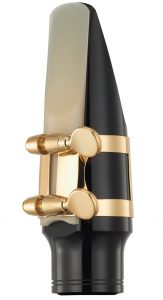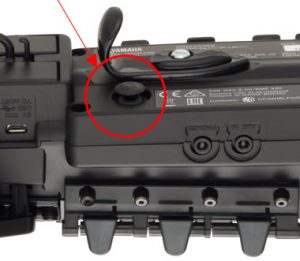
What’s the Difference Between an Acoustic Saxophone and the Yds-150 Digital Saxophone?
Curated from YAMAHA – by Austin Snowden –
THERE ARE LOTS OF SIMILARITIES, BUT THEY ARE FAR FROM THE SAME.
Advances in digital technology have allowed Yamaha to take the saxophone to a whole new level. The YDS-150 Digital Saxophone has a lot in common with its acoustic counterpart — yet it offers numerous exciting innovations. In this article, we’ll take a look at the similarities and differences between acoustic and digital saxes, and explore some of the new features offered by the YDS-150.
IT STARTS AT THE TOP
Even at first glance, one major similarity is quite obvious: Both instruments use a mouthpiece, reed and ligature. This is where air enters the horn and ultimately where the player controls nearly every aspect of the sound. In acoustic saxes, whether you are playing a soprano, alto, tenor or bari, these components can be highly customized to suit your playing needs. The YDS-150, however, is designed to work with its included mouthpiece, which is nearly identical to a Yamaha 4C Alto Saxophone mouthpiece. This means embouchure and articulation have the same approach, although creating a characteristic sound is going to take more skill on an acoustic sax. The YDS-150 mouthpiece is designed so that any beginner or pro can pick up the instrument and make a great sound right away.
REED ALL ABOUT IT
Whether it’s made of cane or synthetic materials, any reed that can fit on an acoustic alto saxophone mouthpiece will fit on the supplied YDS-150 mouthpiece. But the similarities stop there. Unlike on an acoustic saxophone, the reed on the Digital Saxophone is not what generates the sound; instead, that’s the job of a breath sensor mounted inside its body, as shown here:
When playing the YDS-150, you do not want the reed to vibrate, because doing so interferes with how the breath sensor detects your air and prevents the instrument from functioning correctly. The supplied synthetic reed is designed so that it does not vibrate under normal playing conditions. This means that for the sax player with boxes of reeds ready to go, you are better off leaving them for your acoustic horn. Likewise, swapping other mouthpieces onto the YDS-150 may not yield the same results as the included “DS” (Digital Sax) mouthpiece.
CONTROL
Players of acoustic saxophones control tone through manipulation of air flow and embouchure. With practice, a skilled saxophonist can even do pitch bends, add vibrato, and perform numerous extended techniques that same way. But all of these are dependent on a vibrating reed.
On the YDS-150, where the reed does not vibrate, these effects and more can all be fine tuned with the use of a dedicated smartphone app. Everything from pitch to key response, transposition, distortion effects — even switching from a soprano voice to a bari voice — can be done in a matter of seconds.
SONIC VARIETY
An acoustic saxophone is capable of producing many different tonalities with a great deal of flexibility, but it is the sole responsibility of the player to develop the skills needed to control and manipulate the sound that comes from their instrument. The YDS-150 also offers a wide range of tonalities via 73 preset voices, assuring a greater degree of consistency. In addition to standard sax sounds, there are non-saxophone sounds and other digital effects that simply are not possible on an acoustic sax, such as the sound of a soprano and bari playing at the same time. (Not easy to do in real life!) With the use of the dedicated smartphone app, the player can further hone in on the sound quality they’re looking for.
THE KEYS ARE KEY
The YDS-150 has the exact same key layout as an acoustic sax. Everything from the palm keys to the side trill keys, spatula, high F# — even a low A key — are positioned exactly where a saxophonist will expect them to be. The one difference is the addition of an Analog Controller on the YDS-150. Shaped much like a joystick on a gaming controller, this allows the player to control effects such as pitch bends using their right thumb.
BELL RESONANCE
Of course, a saxophone is not complete without its distinctive eye-catching brass bell. On an acoustic sax, the bell helps to project the sound and also plays a major role in how the instrument resonates. Although the YDS-150 has an internal speaker that “projects” the sound, its brass bell is connected to internal componentry in order to provide the player with physical feedback that emulates that of an acoustic instrument.
Ready to learn more? Here’s a video that highlights some of the main YDS-150 features:



